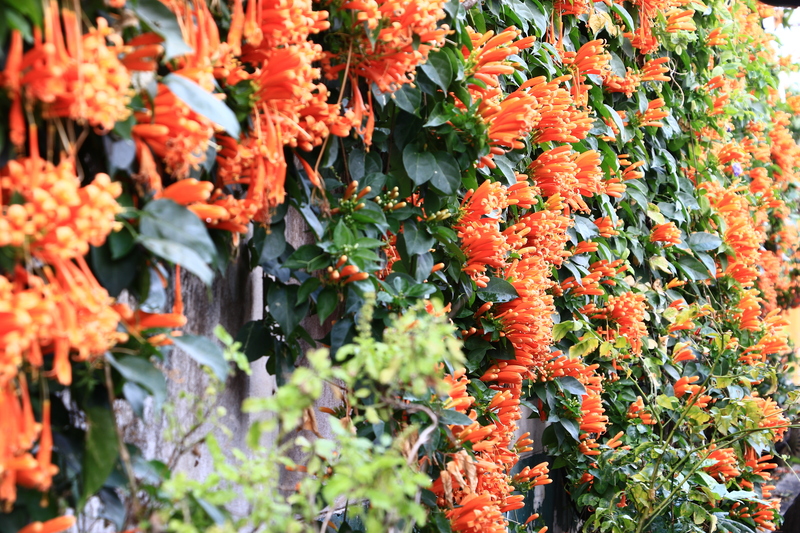Nature's Playground: Building a Child-Friendly Garden Haven
Posted on 22/09/2025
Nature's Playground: Building a Child-Friendly Garden Haven
Creating a garden that is both a playground and a sanctuary for children is a rewarding way to encourage outdoor exploration, imagination, and family fun. A well-designed child-friendly garden haven brings together adventure, safety, and the magic of nature. In this comprehensive article, we dive into the essentials of designing a garden that is as inviting as it is functional for kids, offering inspiration, practical tips, and clever ideas for parents and caregivers.
Why Create a Child-Friendly Nature Garden?
- Fosters a love for nature: Regular interaction with a natural environment supports curiosity and appreciation for the outdoors.
- Promotes healthy living: Active play helps children develop motor skills, coordination, and healthy habits.
- Encourages creativity and learning: A garden full of color, textures, and wildlife inspires imaginative and educational play.
- Strengthens family bonds: Shared gardening and outdoor activities provide quality bonding opportunities.
Key Elements of a Child-Safe Garden Oasis
Before you begin designing your nature-inspired children's play area, it's important to consider some non-negotiable features that make your space both enchanting and safe:
- Protective boundaries: Use fences, hedges, or living walls to prevent children from wandering off.
- Non-toxic plants: Choose plants and flowers that are safe for children and avoid those that are poisonous or have sharp thorns.
- Avoid chemical hazards: Eliminate pesticides and toxic gardening chemicals in favor of organic alternatives.
- Soft landing zones: Install grass, mulch, or rubberized bark under play areas to cushion falls.
- Clear sightlines: Design clear lines of sight across the yard, so adults can easily supervise children at play.

Designing Your Child-Friendly Garden Haven
Planning the Perfect Kid-Friendly Backyard Layout
A well-organized garden layout balances open play spaces and shady retreats. Here's how to bring your garden playground dreams to life:
- Divide the space into zones: Create separate areas for energetic play, relaxation, planting, and wildlife watching.
- Add multi-functional features: Consider climbing frames, sand pits, water features, and reading nooks that blend into the natural landscape.
- Incorporate winding paths: Meandering stone or wood chip paths encourage exploration and provide sensory experiences.
- Keep it age-appropriate: Adapt elements for different ages, adding challenge and interest as your children grow.
Natural Play Structures and Features
- Willow tunnels and dens: Living willow can be woven into tunnels, domes, and hideouts for hours of imaginative play.
- Log balancing beams: Use smooth, sturdy tree trunks for balancing games and as natural seating.
- Tree stumps and stepping stones: Create hopscotch paths or obstacle courses from sturdy, sanded logs and stones.
- DIY mud kitchens: Set up a makeshift "kitchen" with pots, pans, and a mud patch for sensory magic.
- Swings made from ropes and branches: Install secure rope swings or hammocks in shaded areas under mature trees.
Encouraging Wildlife and Ecological Diversity
A true nature playground teems with wildlife. Introducing biodiversity nurtures respect for living creatures and makes the garden endlessly fascinating for kids.
Tips for Drawing Wildlife to Your Child-Friendly Sanctuary
- Plant native flowers and shrubs: Native species support pollinators like bees and butterflies.
- Install bird feeders and baths: Inviting birds adds color and birdsong, enhancing the sensory experience.
- Create log piles and bug hotels: These provide homes for beneficial insects, hedgehogs, and frogs.
- Include a small water feature: A shallow pond or bubbling fountain can attract dragonflies, frogs, and other wildlife (ensure water features are child-safe and supervised).
World of Sensory Exploration in a Kids' Garden
Children best learn through their senses. A garden haven for children should stimulate touch, smell, sight, sound, and even taste.
Sensory Plants and Play Ideas
- Touch: Lamb's ear, ornamental grasses, smooth stones.
- Smell: Lavender, mint, lemon balm, scented pelargonium.
- Sight: Boldly colored flowers, shimmering grasses, reflective surfaces.
- Sound: Bamboo for wind rustling, water trickling, wind chimes.
- Taste: Edible plants such as strawberries, cherry tomatoes, and nasturtiums.
Gardening With Children: Making Growing Fun
Empowering children to cultivate their own patches supports responsibility, observation, and pride in their achievements. Even young children can help grow easy crops and flowers.
Top Plants for a Child's Garden Corner
- Sunflowers: Fast-growing and dramatic, perfect for competitions and measuring.
- Radishes, carrots, and peas: Quick to sprout, easy to harvest, and kid-approved snacks.
- Herbs: Mint, chives, and basil are hardy and aromatic, with leaves to pick and sniff.
- Marigolds and nasturtiums: Edible petals, friendly to pollinators, and bright colors.
Set aside defined raised beds, pots, or a "secret garden" springing with edible delights and flowers children can pick themselves.
Safety First: Making a Kid-Friendly Outdoor Area Secure
While adventure is essential, safety must never come second when building a child-safe garden play haven.
- Check and maintain fences and gates: Repair gaps or weaknesses and install lockable gates.
- Avoid sharp tools and chemicals: Store gardening equipment and fertilizers out of reach.
- Remove toxic plants: Be aware of local species that are harmful if ingested or touched.
- Use non-slip surfaces: Especially under swings or near water features.
- Shade and hydration: Provide shady spots and keep water bottles handy for summer play.
- First-aid kit: Store a basic first-aid kit near or in the garden for accidents or stings.
Creative Play Ideas for Your Nature's Playground
A garden designed as a natural playground becomes a stage for endless adventures. Not sure how to keep little ones entertained? Try these fun, screen-free garden play activities:
- Nature scavenger hunts: Make lists of leaves, flowers, and bugs to spot.
- Building fairy houses: Use fallen twigs, acorns, bark, and stones as magical miniature furnishings.
- Outdoor painting: Set up an easel or use water and paintbrushes on paving stones.
- Shadow drawing: Trace the shapes of plants or toys in the morning sunlight.
- Garden camping: Pitch a tent for a daytime book nook or an overnight backyard sleepover under the stars.
- Wildlife watching journals: Record birds, insects, and weather changes over time.
Easy DIY Projects for a Magical Kids' Garden
You don't need a huge budget or professional landscapers to craft an inviting child-centered garden place. Here are three simple DIY projects to try:
1. Painted Pebble Trail
Gather flat stones, let children paint them with friendly insects or patterns, and create a decorative path weaving through flower beds.
2. Butterfly Puddling Dish
Fill a shallow dish with sand, pebbles, and a splash of water, then place it in a sunny spot. Butterflies flock to sip the minerals and delight young observers.
3. Tire Planter Stack
Old tires painted in bright colors and stacked make fun planters for herbs, flowers, or strawberries.
Adapting Your Garden as Children Grow
A truly great garden haven for kids changes over time. What captivated toddlers may need refreshing for older children and tweens:
- Add climbing features: Rope ladders, treehouses, or obstacle courses for older children.
- Sports space: Clear an area for soccer, volleyball, or other games.
- Garden science projects: Weather stations, mini greenhouses, or butterfly-raising kits for budding naturalists.
- Private retreats: Encourage independence with hammocks, reading corners, or secluded hideouts.
Environmental Learning Through Garden Play
A child-friendly nature playground isn't just about fun--it's a foundation for developing eco-awareness. Kids who play in gardens learn firsthand about the cycles of life, the importance of pollinators, and sustainable habits.
Ideas to Inspire Green Living
- Composting: Start a compost heap and explain food waste recycling.
- Water conservation: Use rain barrels for watering.
- Bug watching: Encourage appreciation for bees, worms, and butterflies.
- Recycle and reuse: Use reclaimed materials creatively in garden design.

Seasonal Fun in the Garden Playground
Your nature-inspired children's play haven offers new activities with every season:
- Spring: Seed planting, tadpole watching, Easter egg hunts.
- Summer: Water balloon games, flower pressing, bee spotting.
- Autumn: Leaf art, bulb planting, wildlife feeders.
- Winter: Bird-friendly treats, twig forts, frosty nature walks.
Conclusion: Growing Memories in a Child-Friendly Garden
The greatest gift for any child is time in nature's playground, where wonder grows alongside them. By transforming your garden into a child-focused nature haven, you build a living classroom, imaginative stage, and safe retreat just outside your door. With a little planning and a lot of creativity, your garden will pulse with laughter, learning, and family memories for many seasons to come.
Get started today--nature's playground awaits!

